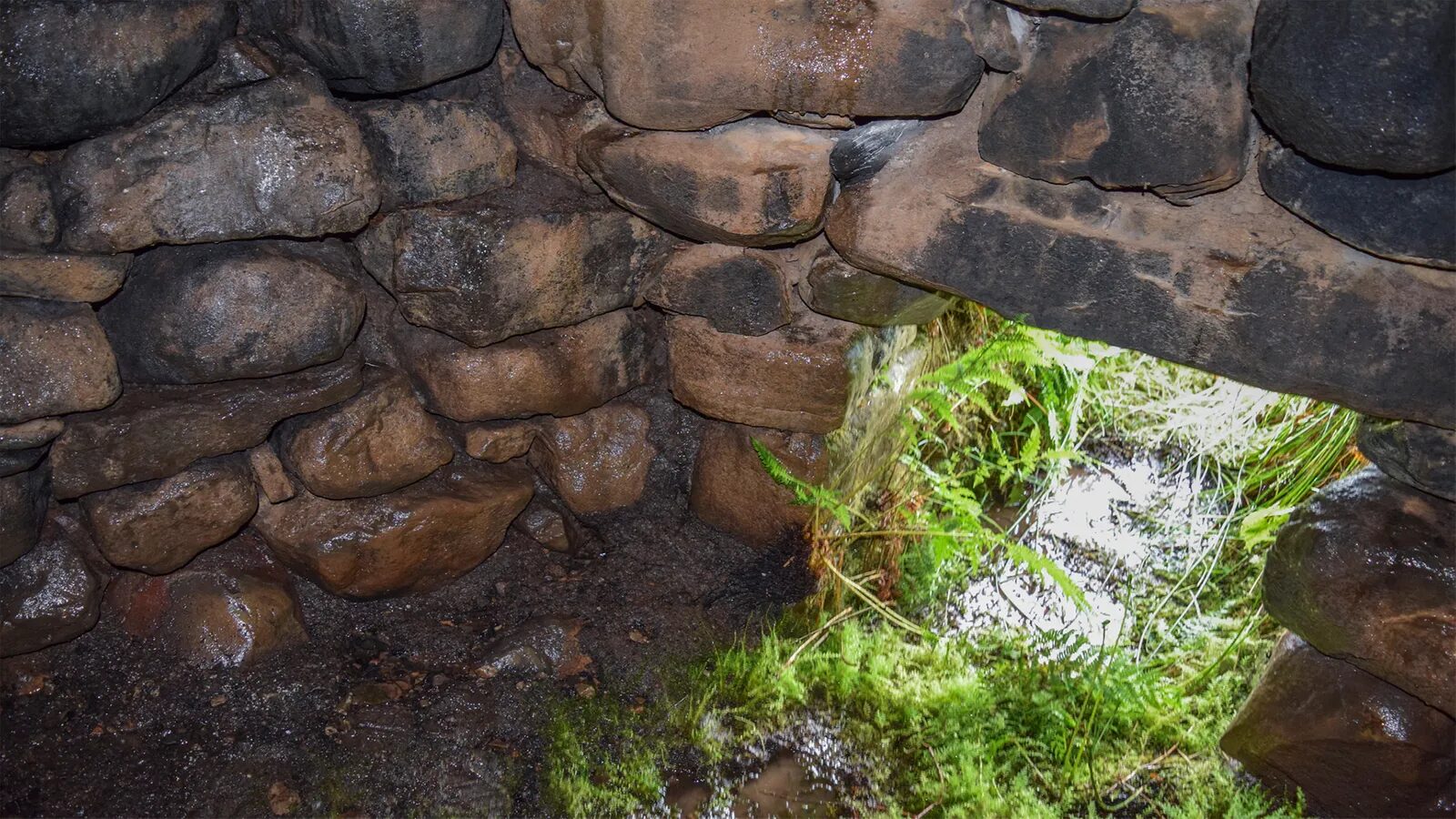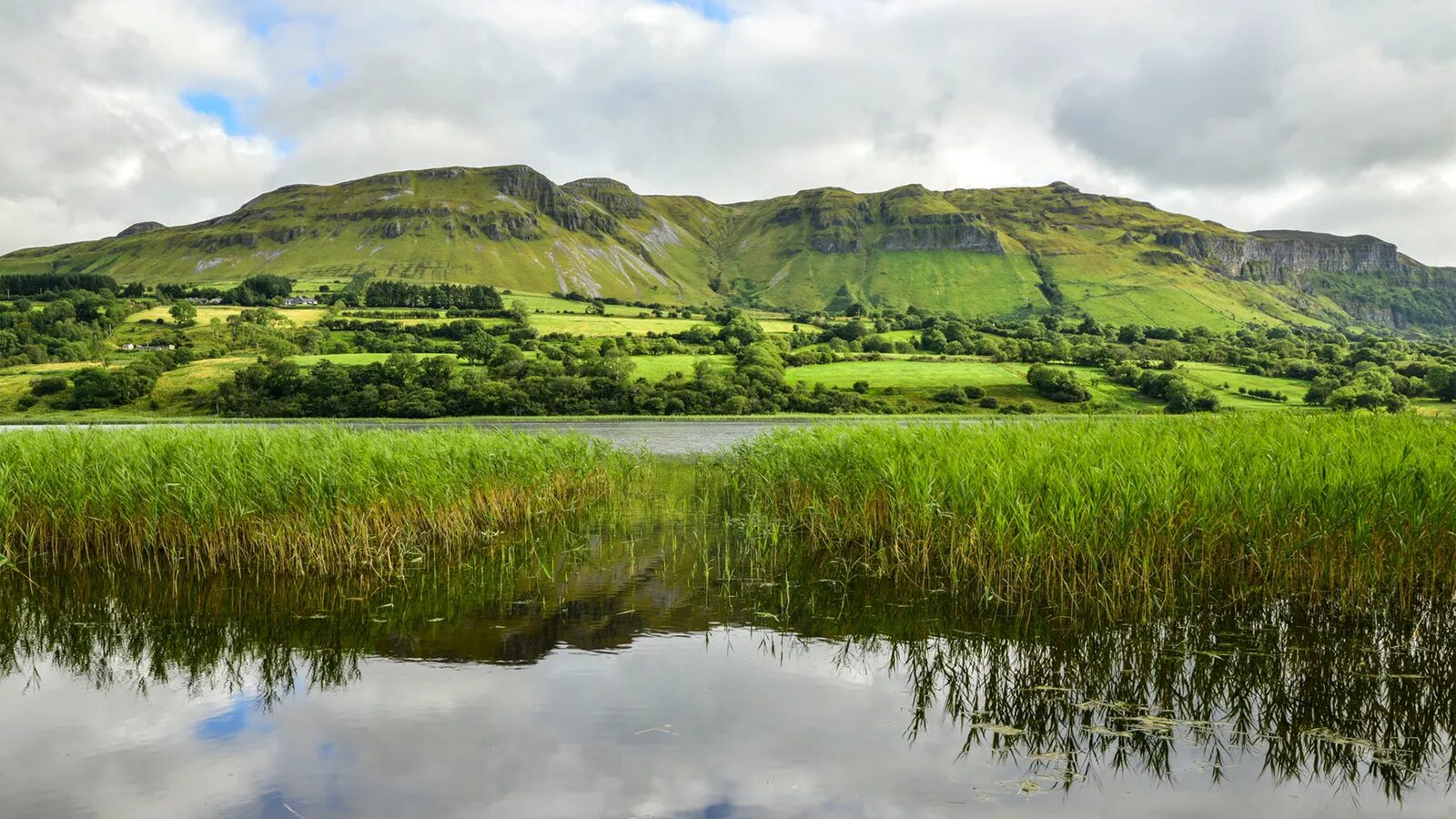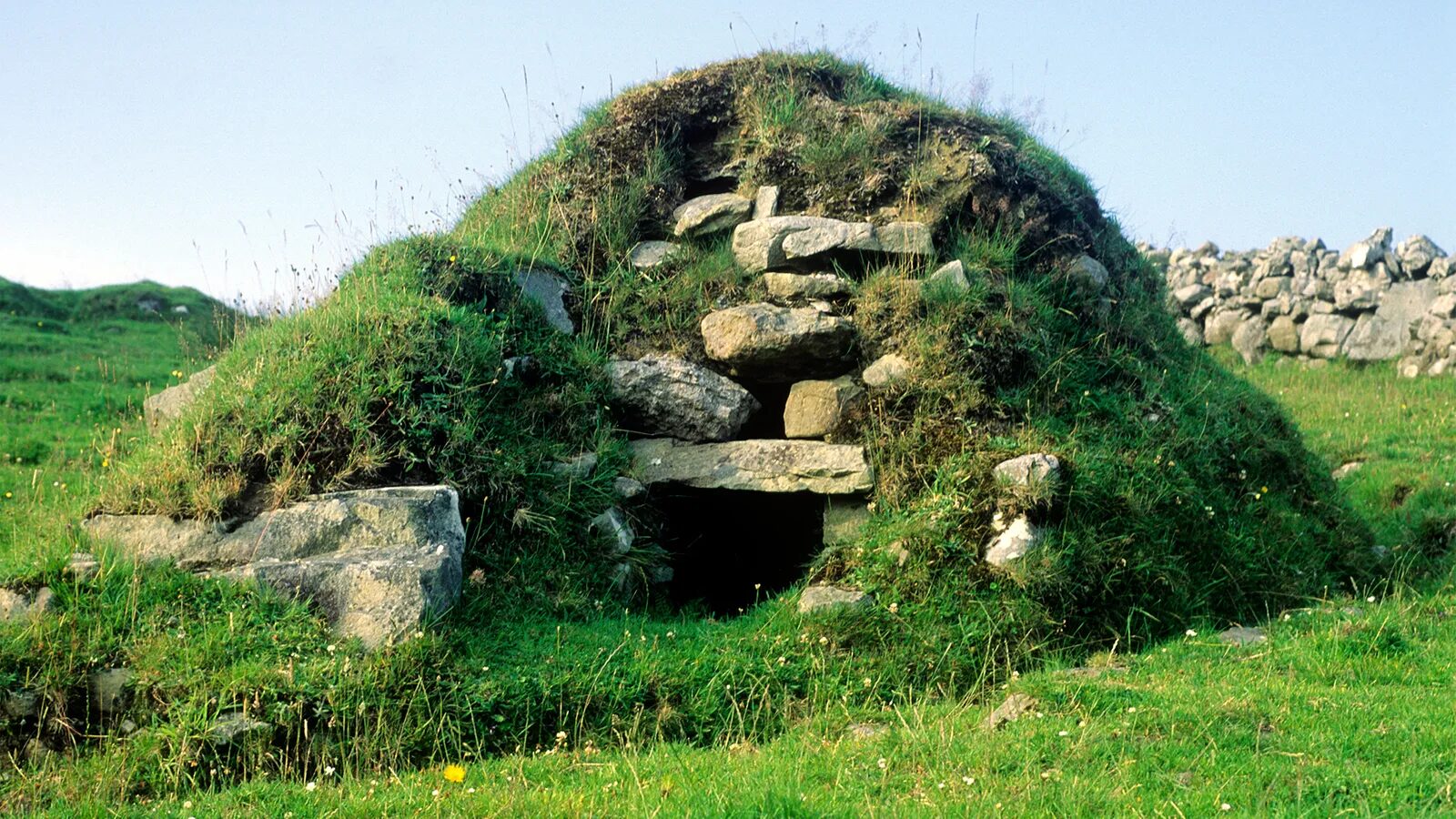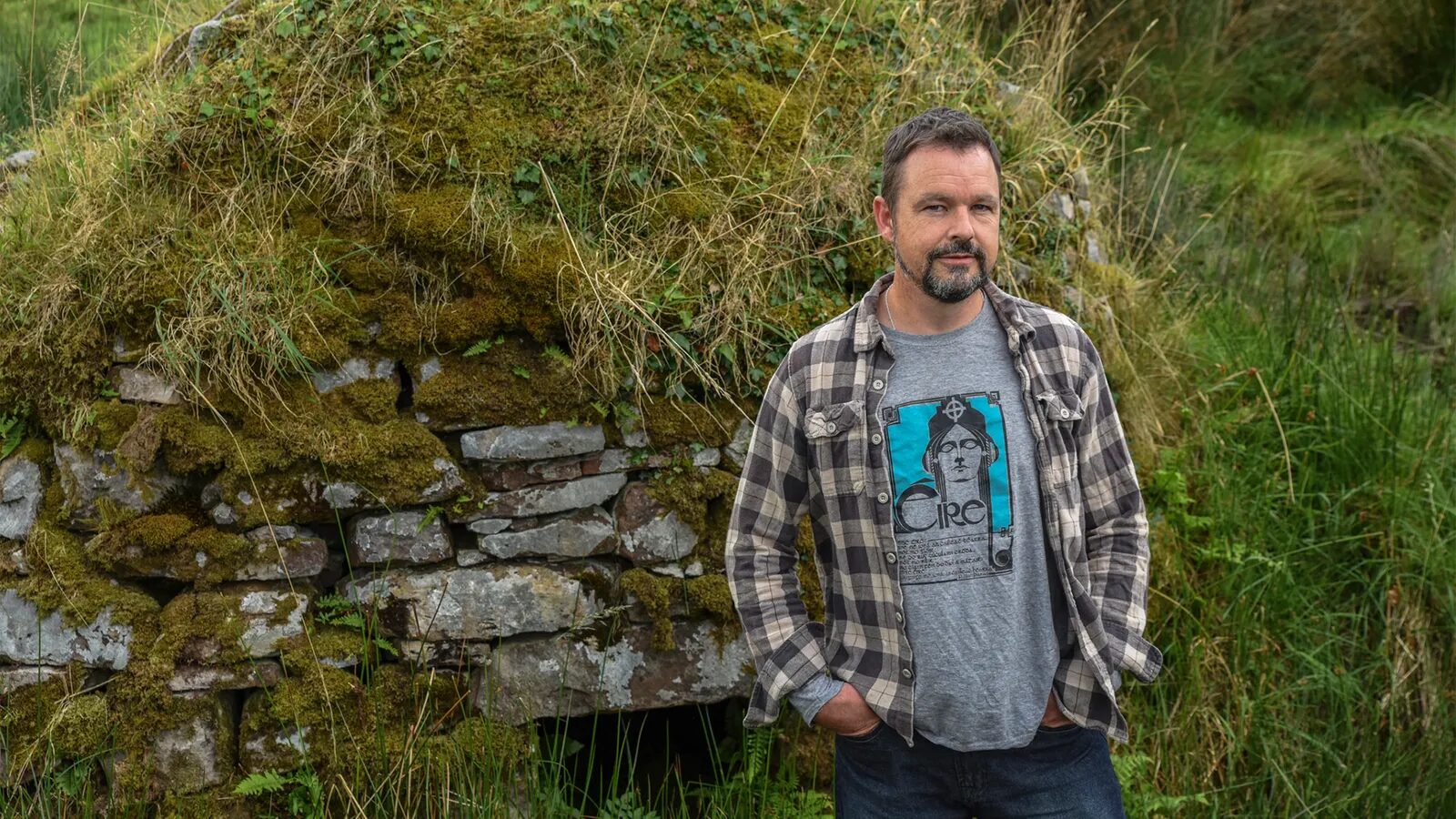Naked and sweaty, they laid inside grass-covered stone igloo-like structures in the remote fields of Ireland. Some were ill, others may have been having hallucinations, hatching plans to distil illegal alcohol or imagining they were the Vikings who once raided this country. By the time these addled folk emerged from the structures back into the fresh air of 19th-Century Ireland, they had been through a jarring mental and physical journey. One that still holds many mysteries.
"Some people reckoned the cure was worse than the disease," archaeologist Aidan Harte told me of this sweltering experience, as he stood atop a 150-year-old Irish sweathouse in Killadiskert, an isolated corner of County Leitrim. "Part of the reason there's crazy theories about hallucinations and making alcohol is because we just don't fully know the truth about sweathouses and all their uses. They're a bit of a riddle that we're now trying to work out."
Harte is leading the new Leitrim Sweathouse Project with Leitrim County Council Heritage Officer Sarah Malone. Malone said their aim was to identify and demystify these timeworn structures, which are scattered across Ireland and were used as a sort of extreme stone sauna from the early 1600s to the early 1900s. She said they had so far recorded more than 100 sweathouses in Leitrim alone - more than anywhere else in Ireland, and a staggering concentration given that this tiny Greater London-sized county is home to fewer than 35,000 people.
For generations, most of these mysterious beehive-shaped structures have sat dormant and forgotten in Leitrim, a whisper-quiet, picturesque county in Ireland's north-west characterised by sprawling farms, petite towns and the kind of intensely green, hilly landscape that's inspired countless Irish poems. According to Harte, that's because many of the sweathouses are on properties owned by farmers who know little about them, other than them being impediments to agriculture. This is just the way it is in Ireland. Inhabited for more than 10,000 years, the nation is laden with so many archaeological sites that they can't all be pinpointed, probed and preserved. Now, the Leitrim Sweathouse Project is seeking volunteers to collate information and oral histories on this little-known aspect of Ireland's history.
Fortunately, Leitrim's stone mounds are still sturdy. Nothing shifted as I scaled the 2.2m-tall Killadiskert structure to earn striking views of the undulating farmland that surrounds it. "It shouldn't cave in," Harte said, cheekily. "Seriously though, these things were made to last."
Once I stepped back onto the soggy earth, Harte ran his hand across the sweathouse's uneven surface as he explained its construction. As with the one in Killadiskert, most Irish sweathouses were built into hillsides or banks to bolster their foundation, and set in remote locations near a water source. Chunks of uncut rock, each a different shape and size, were carefully piled and then bonded with clay and sod to create a domed structure with a single low entrance, similar in appearance to an igloo.

Comment: Note that it's possible the 'cooling off' period had it's own wealth of benefits: Benefits of sauna and winter-swimming revealed in new study on Scandinavian men
While sweating certainly has proven medical benefits - including helping to improve blood circulation and filter toxins out of the body - according to Dr Ronan Foley, a leading expert on Irish sweathouses from Ireland's Maynooth University, these naked sauna sessions were often nothing more than a placebo.
"It would be very reasonable to assume the sweathouse cure did not work all the time or for all people, even for the conditions it was recommended for, so it was never a panacea in that sense," Foley said.
Comment: How cynical. Few therapies and medications work for all people all the time. Moreover, unlike present-day pharmaceutical medications, at least this practice didn't come with a litany of potentially harmful side effects. Also, as we can see from modern societies that practice sauna, there are numerous other benefits such as community bonding and relaxation which are proven to have a positive effect on a persons well-being.
Yet, in Ireland's isolated landscape, where modern medical facilities were few and far between, sweathouses remained popular for roughly 300 years. Foley said they were commonly used to treat rheumatism, arthritis, fevers and respiratory conditions, especially in rural areas like Leitrim, which is home to more than one-third of Ireland's identified sweathouses. By comparison, very few are located near the cities of Dublin, Cork and Limerick, which had far more sophisticated health services than Leitrim until recent decades.

An even greater mystery than the use of sweathouses is their origin. According to Foley, there are four prevailing theories. One claims these structures can be traced to Scandinavia and the Vikings. Saunas have been used in northern Europe for more than 2,000 years, and Vikings had a major impact on Irish culture while occupying parts of the country between the 9th and 12th Centuries. Another theory posits they may have been imported from the US by returning Irish immigrants who'd studied Native American sweat lodges. Just as intriguing is the theory sweathouses were re-purposed fulacht fiadh, a type of ancient, outdoor Irish oven. Finally, some old antiquarian journals suggested the Irish creators of the sweathouse may have been inspired by seeing hammams while travelling in the Middle East, where the Islamic bathhouses have been used for more than a millennium.
Comment: Note that over in Britain, evidence suggests that bathhouses were in use even before the Romans arrived.
Yet, none of these theories convince Foley. Instead, he believes Ireland's sweathouses emerged organically. "I feel they were a sort of local variant of a global cultural production of sweating-cure places," he said. "The healing value of sweating was well known. Building small buildings that induced sweating from local materials would have been sort of worked out by Irish rural dwellers."
Today, Ireland's ancient sweathouses are valuable artefacts of the country's rural history. Harte's project could even help these long-neglected structures become offbeat tourist attractions, according to Sarah McCarthy, a regional development officer for Fáilte Ireland, the country's national tourism body. "We know that culture and heritage form a significant element of Ireland's appeal to overseas visitors," McCarthy said. "The Leitrim sweathouses and the associated research project reveal a hidden part of our history and heritage, and add to the riches for the visitor to uncover."
Harte shares this hope. But as he bent down to peek into the tight opening of the Killadiskert sweathouse, he conceded most of these structures aren't yet ready to accommodate tourists. While tourists are able to gain direct access to the nearby sweathouses at St Hughes well and Parke's Castle, Killadiskert sweathouse and many others are on private land. Even as an archaeologist, Harte hadn't always found it easy getting permission from landowners to visit other sweathouses. A key aim of the Leitrim Sweathouse Project is to gain greater public recognition and heritage protection for these structures.
One day, Ireland's sweaty, naked saunas may be renowned, preserved and pinned to a tourist trail. For now, however, they remain enigmatic stone humps hidden in the emerald landscape, waiting for someone to unravel their secrets.






Comment: See also:
- Crannogs: Scotland's mysterious ancient artificial islands
- Brochs: Scotland's enigmatic Iron Age circular stone structures
- Pömmelte: Germany's 'Stonehenge'
- Is key to indecipherable Pictish stones to be found in ancient Tibetan symbols?
And check out SOTT radio's: Behind the Headlines: Who was Jesus? Examining the evidence that Christ may in fact have been Caesar!